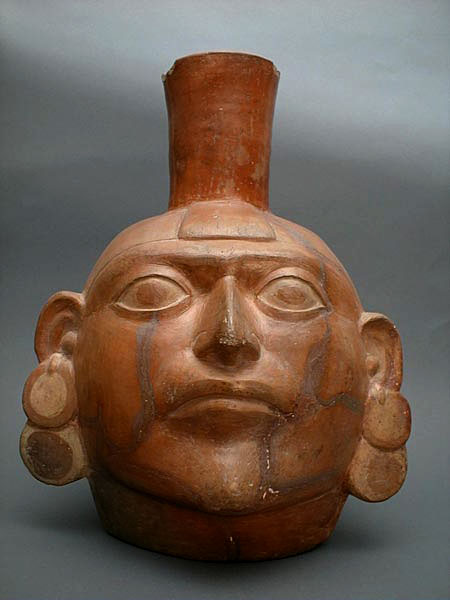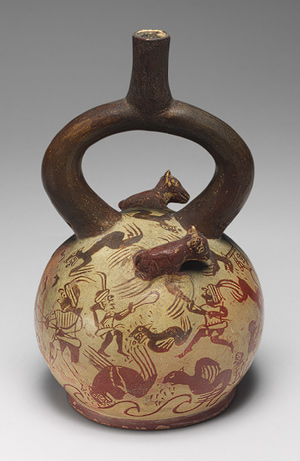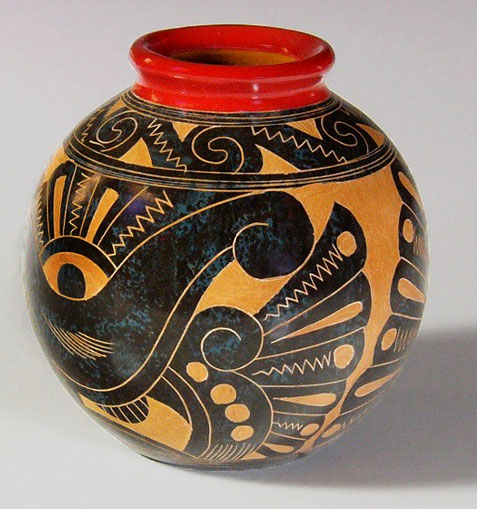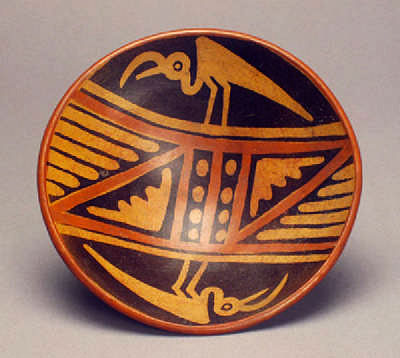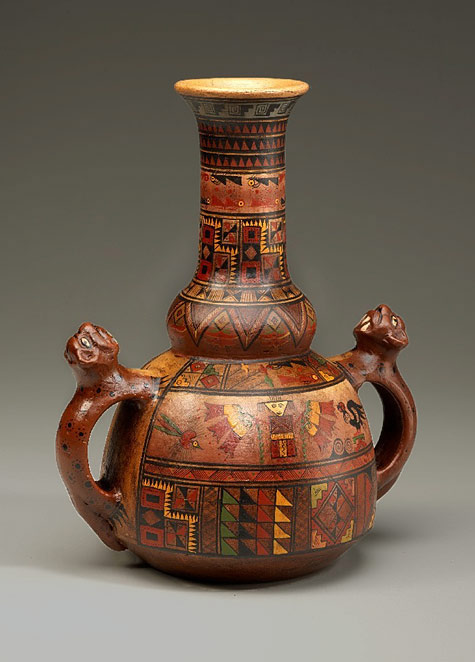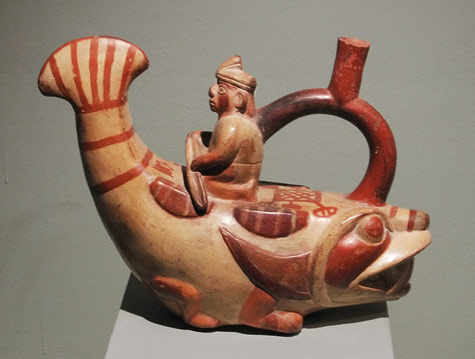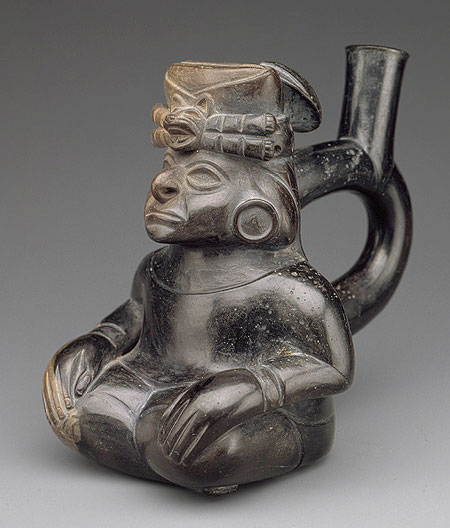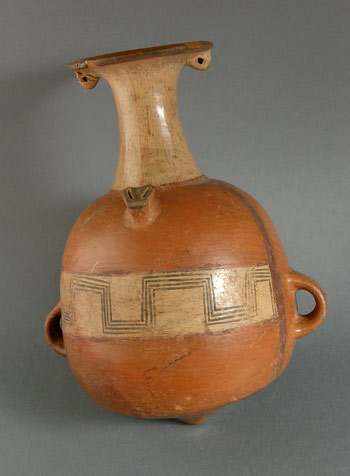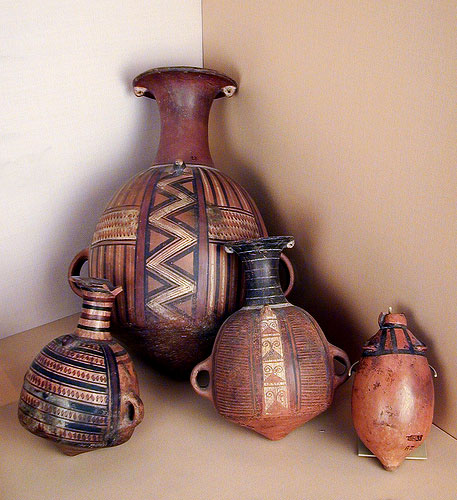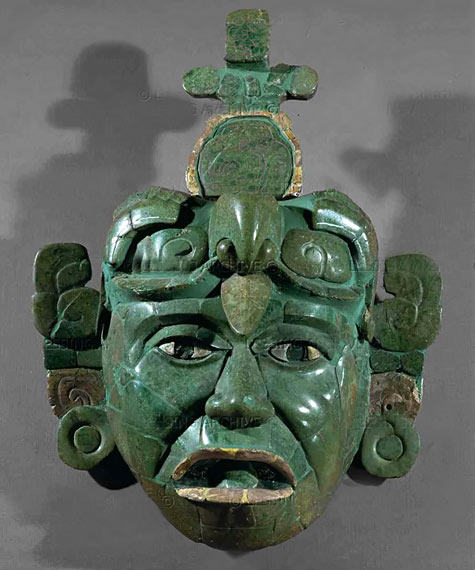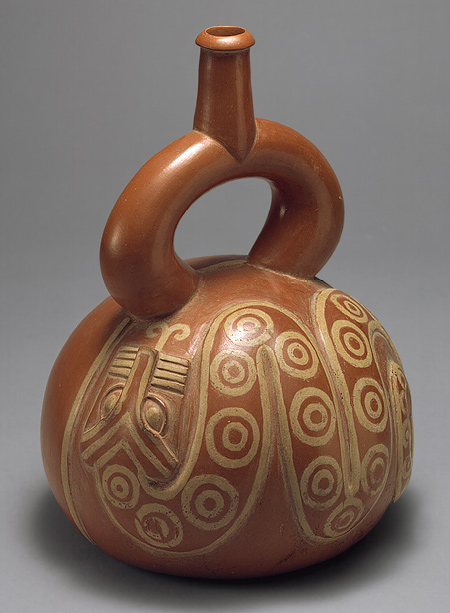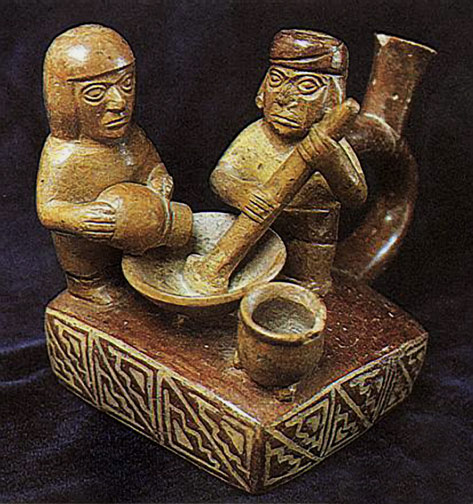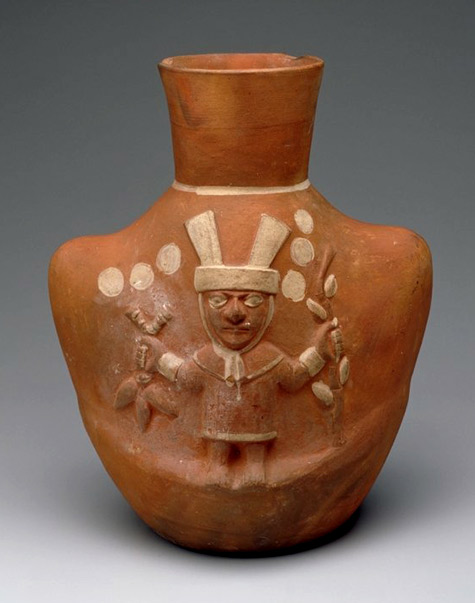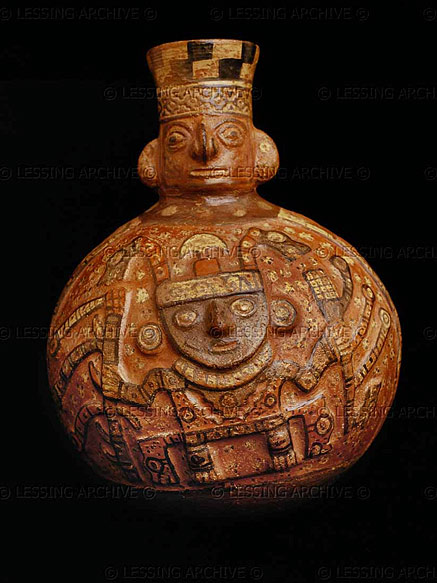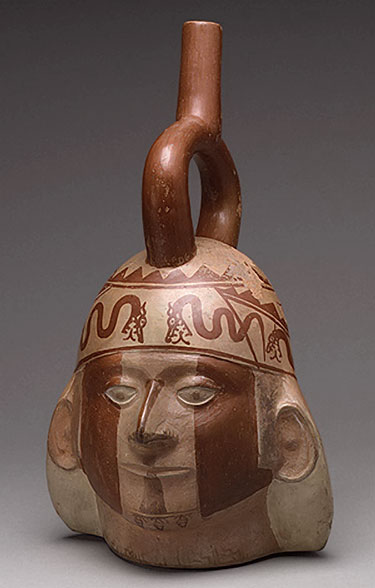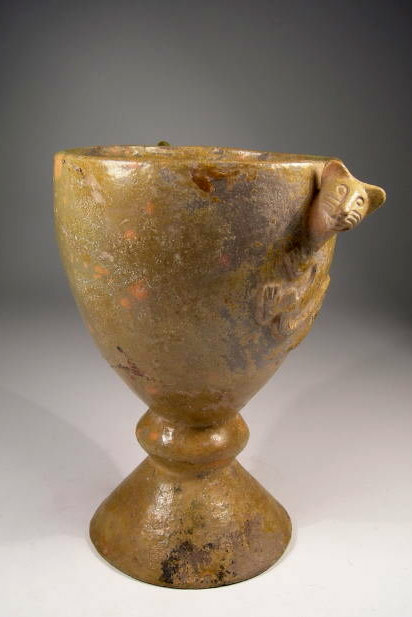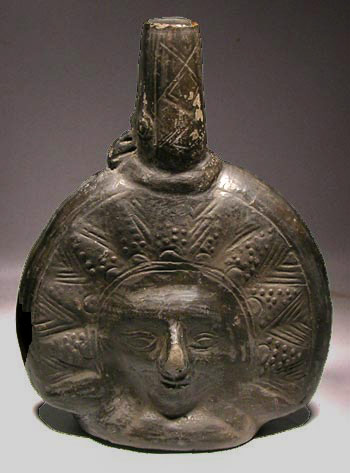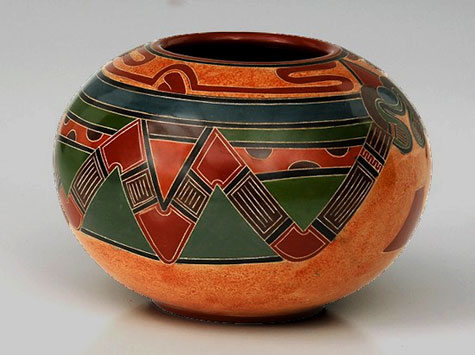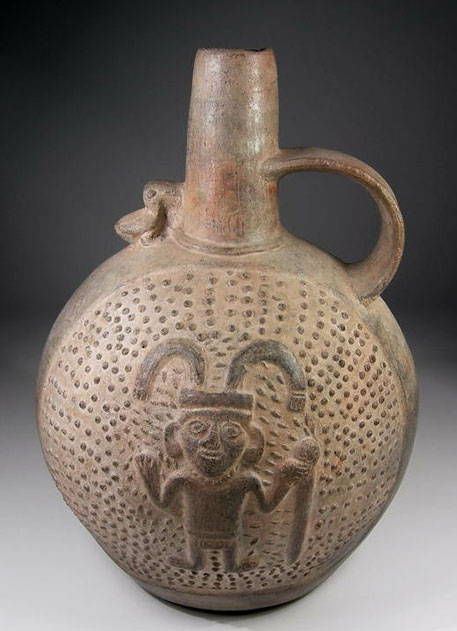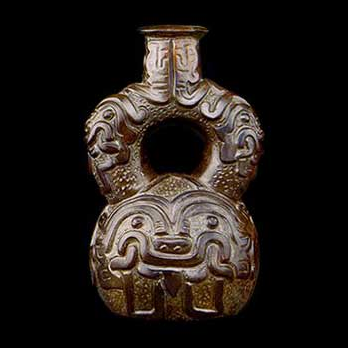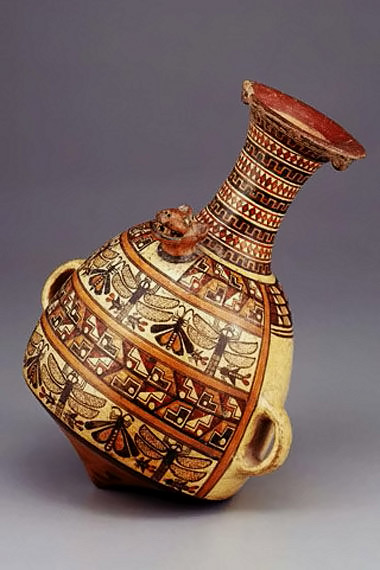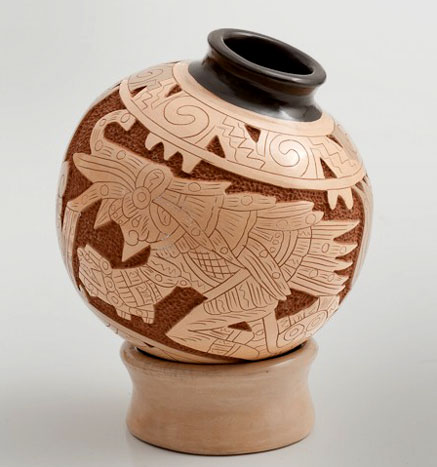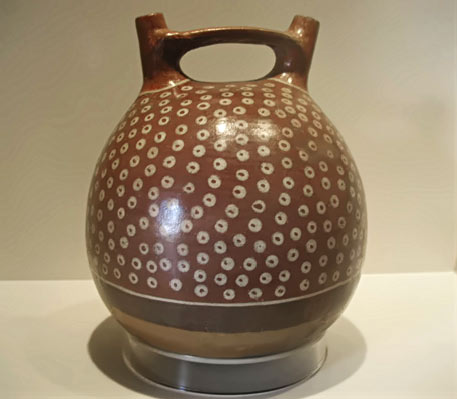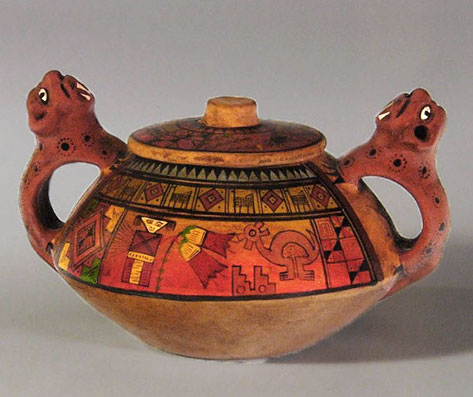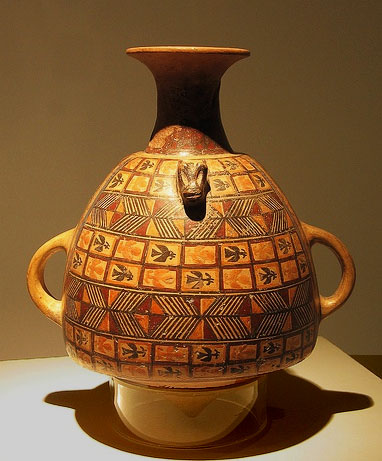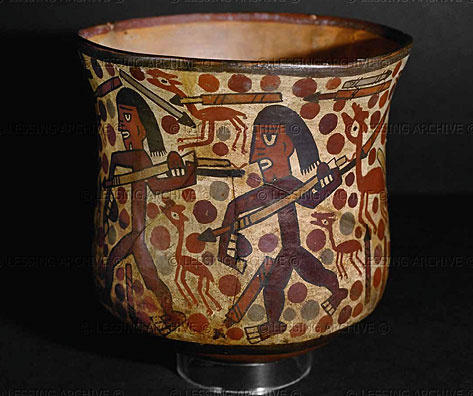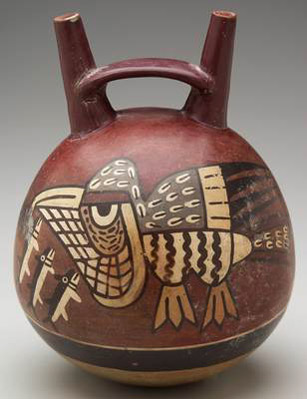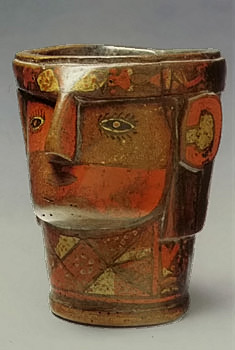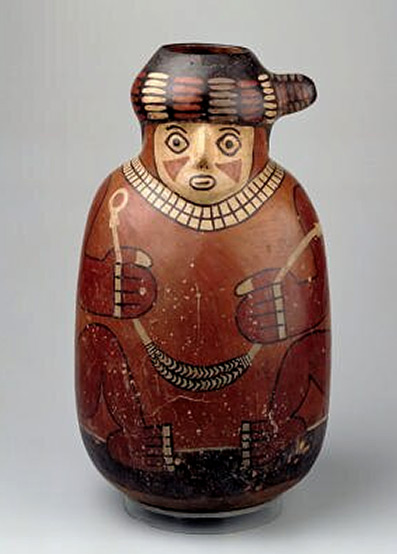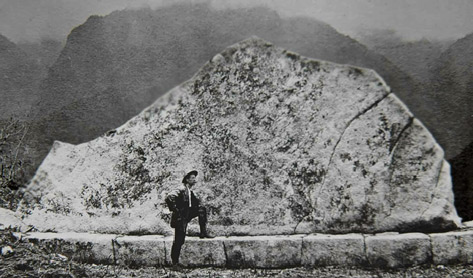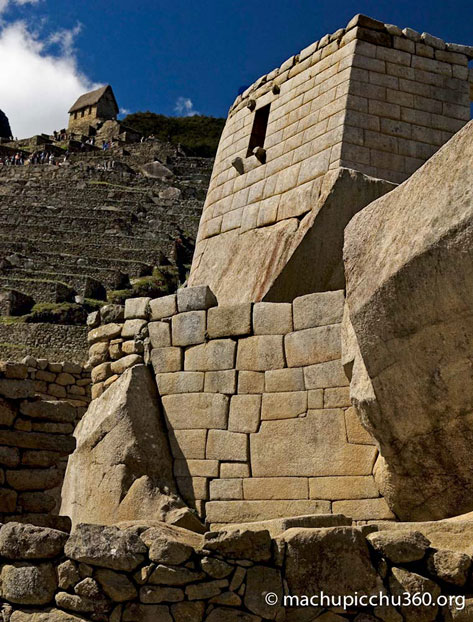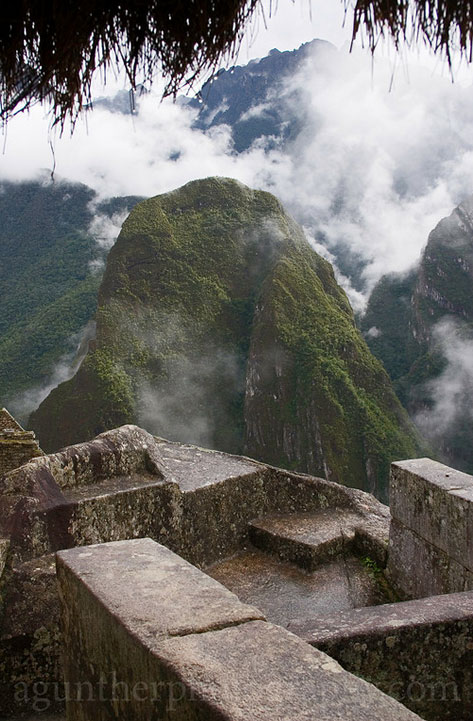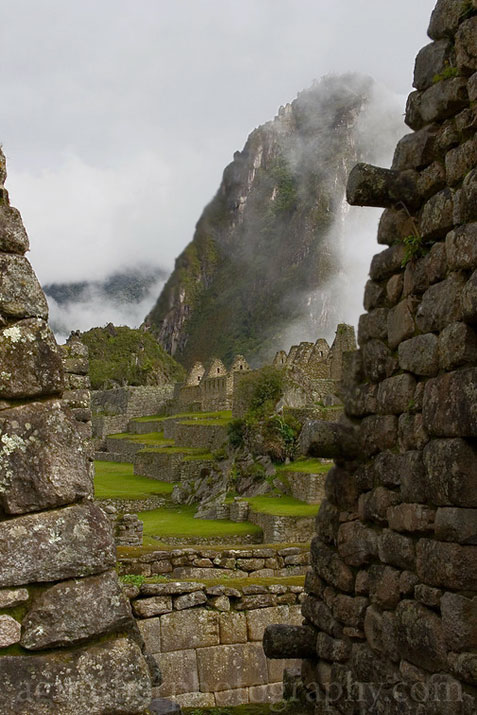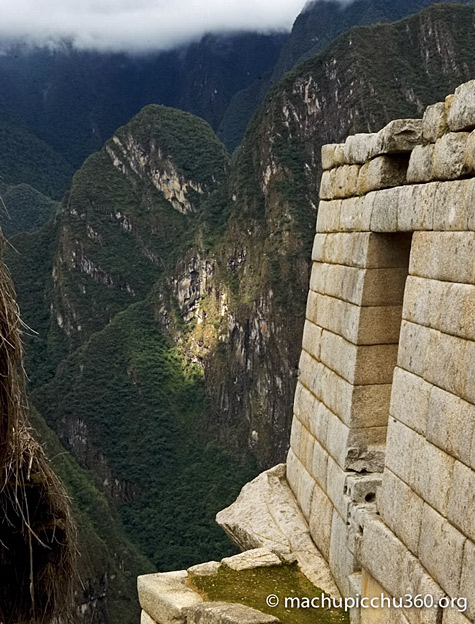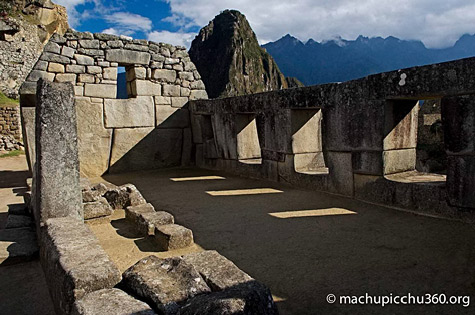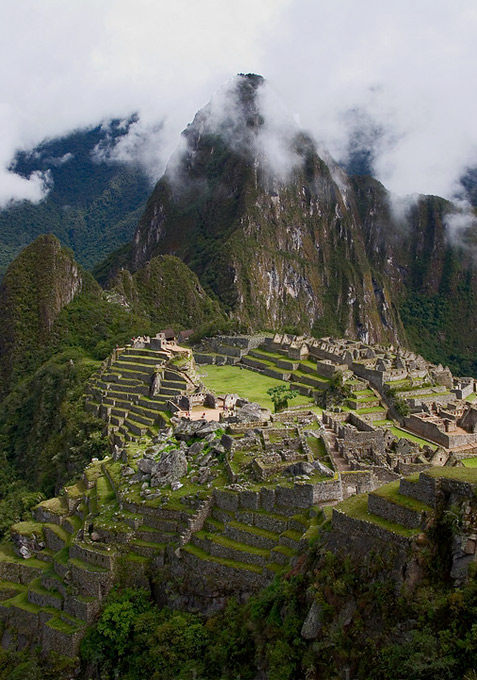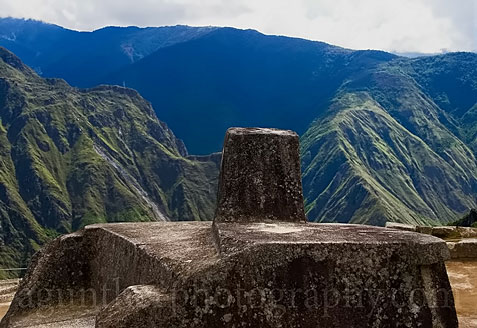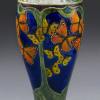Ancient Peru was the seat of several prominent Andean civilizations, most notably that of the Incas whose empire was captured by the Spanish conquistadors in 1533.
During the reign of the Inca’s, the production of pottery in the Andes was an art that had already developed in the region for thousands of years. One characteristic of Inca pottery is that it did not portray the human form, unlike other cultures that thrived before them. They focused more on geometric patterns and shapes and heads of animals. The pottery of the Incas lacked the drama and artistry of the ceramics of earlier civilizations of Peru like the Moche and Nazca.
A Mochicas Terracotta Head
The best example of pottery produced before the days of the Inca Empire is found in the ceramics produced by the Moche or Mochica culture that thrived from 100 to 700 AD in the northern Peruvian coast. The Moche produced large amounts of pottery aided by the use of molds to create large quantities of specific shapes. Their color pallet was mostly limited to red, black and white. They used anthropomorphic figures and animal faces and bodies to shape their ceramic. They were the only pre-Inca culture to incorporate realistic facial expressions and emotions in their pottery work, a characteristic that the Inca pottery did not employ.
Moche figural vessel
The production and the use of pottery during the Inca Civilization had two purposes, utilitarian and ceremonial. Ceremonial pottery also known as huaco was of the best quality material and the most elaborate, it was made specifically for ceremonial purposes or rituals only, such as in burial grounds containing drinks and food that the dead would need for its journey. The finest pottery and ceramic was produced for religious ceremonies, they would contain the food offered to the Inca gods such as Inti or Sun.
Utilitarian pottery was produced for everyday use and was usually thicker and less elaborate. The most common Inca vessel was the stirrup spout which is a bottle shaped vase intended for holding liquids with a long neck that forms the spout which usually serves as a handle. Inca effigy jars were also a popular utilitarian ceramic that was made in large quantities since they were casted from a mold, whereas the stirrup spouts were handmade and welded into the vessel.
Sperical Pot
Bird motif Cocle Bowl-1200AD
Ceremonial Inca Vase with Jaguar handles
INCA (1438-1533) ceramics were painted using the polychrome technique portraying numerous motifs including animals, birds, waves, felines ( popular in the Chavin culture) and geometric patterns found in the Nazca ceramics.
Moche sculptural stirrup spout bottle
Larco Museum – Lima, Peru
Seated figure bottle, 2nd–5th century
Peru; Moche Ceramic
( Met NY )
The Arbalo is one of the most characteristic forms of Inca pottery. With its long-necked jar and conical base it was used to serve the beer on major holidays.
Inca Culture, AD 1430-1532
Peruvian storage vessels
Mayan jade mask
Stirrup-spout bottle with snake, 2nd–3rd century
Peru; Moche Ceramic
Huaco retrato
Moche Jar 4th Century
( Artsconnected )
Globular vase with high relief.
Wari Culture. AD 500 to 1000
Portrait Head Bottle, 5th–6th century
Peru; Moche Ceramic
( Met NY )
Peruvian Colonial Chalice
Inca Colonial blackware vessel dating to the early Colonial period.
1550 AD – 1600 AD ( Ancient Artifax )
Storage pot
Chimu Canteen -with Shaman motif
Cuspisnique Vessel
Inca Aribalo
Peruvian ceramic vessel with carved decoration
Large ceramic oval jar, Nazcar
300BC – 600AD
Dual spout drinking vessel
Inca Jaguar handled Vase
Twin handled Inca Aribalo The predominant decoration consisted of geometric, zoomorphic and sculptural designs.
Nazca drinking vessel with warrior figures.
This vessel portrays a pelican fishing and catching three mythical killer whales, showing the importance of coastal activities in Nazca culture.
Andean 900 BCE-1532 CE
Artsconnected, Minneapolis Institute of Arts
Inca Kero ( drinking vessel )
This vessel features a dual-image of a jaguar and an eagle, two of the most important animals in ancient Andean beliefs.
Large ovoid jar representing a crouching human figure
Nazca culture,Peru.
Update
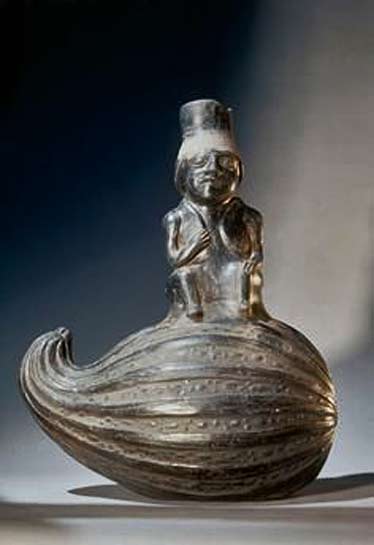
Chimu culture, Northern Peru – Vessel in the shape of a man seated on a pumpkin.
ca. 1100–1470 AD.
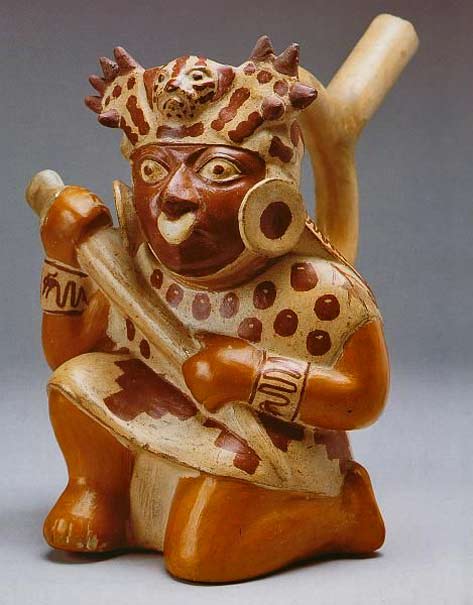
Ceramic Warrior – Culture Moche–Peru
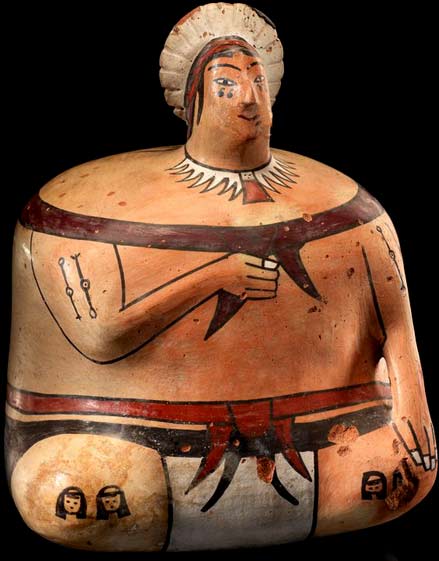
Ica effigy vessel, Nasca Region, Peru
AD 1400’s
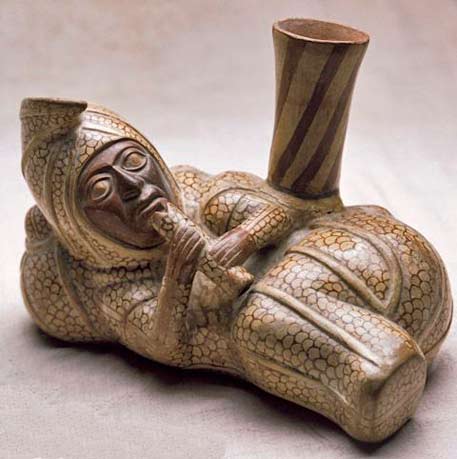
Moche ceramic pot vessel in the form of a recumbent anthropomorphic peasant playing the quena (an Andean flute). (Photo by Nathan Benn)
Wagner.edu
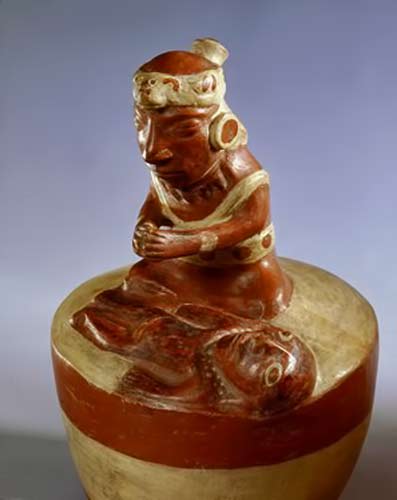
Mochica style, this modelled ceramic shows a priest or shaman engaged in a curing ritual or praying over a deceased person. The shaman wears a feline headdress and large disc earrings.
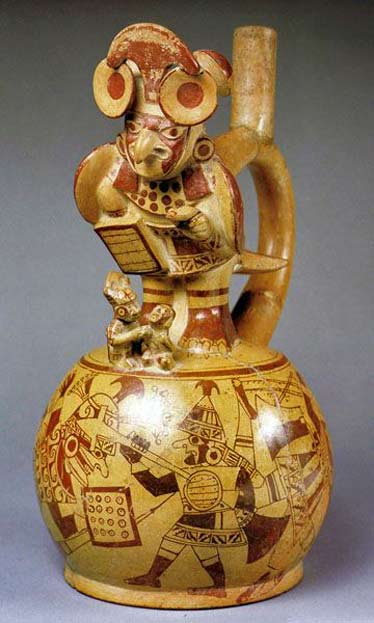
Mochica stirrup spout bottle, Peru
Stirrup-spout bottles were the privileged ceramic medium used by Moche artists in the expression of complex ideological messages. This vessel has human warriors wearing feathered adornments and bird-face masks. They carry shields, lances, and triangular war clubs.
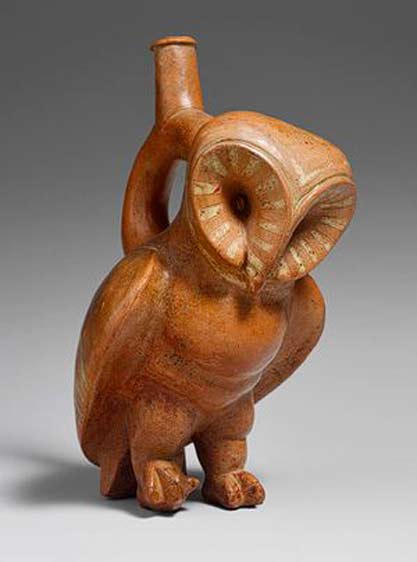
Owl Stirrup Spout Bottle, 2nd–3rd century Peru, Moche
In the Nazca religion, which highly valued plants, animals, and fertility, birds participate in the regeneration of life.
Met, NY
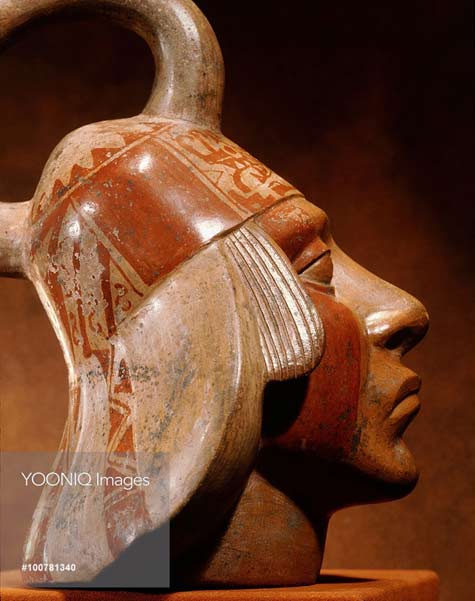
Stirrup spouted Mochica portrait jar depicting a face of a nobleman
600AD
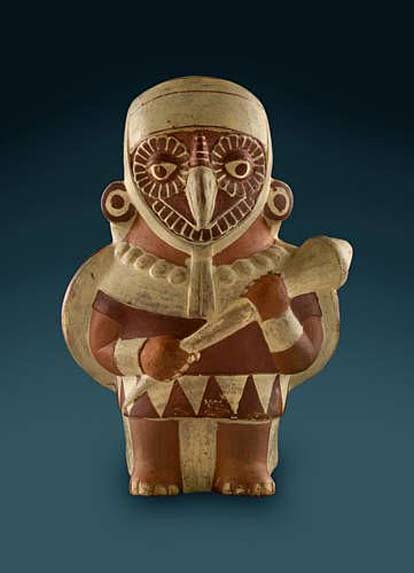
This ceramic vessel of a supernatural owl warrior illustrates how the Moche people of northern Peru associated warriors and predators
Machu Picchu, Peru
Machu Picchu towers over Peru’s Urubamba Valley at 7930 feet above sea level. Its exact purpose remains unknown although modern researchers believe it was a royal estate for Pachacuti, the ninth Sapa Inca, or king, of the Kingdom of Cusco.
Machu Picchu was built around 1450, at the height of the Inca Empire and was abandoned just over 100 years later in 1573. Fortunately the Spanish conquistadors weren’t aware of the location and didn’t have the chance to plunder or deface any of the sacred rocks there, like they did at other Inca Temples. While the Inca pottery was fairly basic, their feats as architects, engineers and stonemasons were unrivalled when they were rulers in the early Fifteenth Century. Their construction of the palatial granite complex, Machu Picchuu, in the Sacred Valley, is an absolute marvel. It was built to withstand earthquakes, by being constructed without any mortar so the stones could absorb vibrations, and it had a sophisticated filtration system to prevent landslides. The remote and unique location was chosen as it sat in the middle of the 4 main sacred mountains of Peru.
The location of Machu Picchu was determined by “sacred geography” because the site was built on and around mountains that held high religious importance in the Inca culture and in the previous cultures that occupied the region. Although known locally, it was unknown to the outside world before being brought to international attention in 1911 by the American historian Hiram Bingham.
Explorer Hiram Bingham poses in front of a rock sculpture carved to resemble a Sacred mountain in Peru.
Hiram Bingham wrote:
” In addition to agriculture and the breeding of useful plants and animals, the Incas carried to a remarkable extreme the manufacture of graceful,symmetrical pottery. They learned to recognize different kinds and qualities of potter’s clay. They selected localities marked by the finest type of clay for the worship of favorable divinities and the manufacture of the most delicate dishes. “
.“In the variety of its charms and the power of its spell, I know of no place in the world which can compare with it. Not only has it great snow peaks looming above the clouds more than two miles overhead, gigantic precipices of many-colored granite rising sheer for thousands of feet above the foaming, glistening, roaring rapids; it has also, in striking contrast, orchids and tree ferns, the delectable beauty of luxurious vegetation, and the mysterious witchery of the jungle.” ~ Hiram Bingham, 1922
Machu Picchu precision stone architecture
Photo – Andre Gunther
Photo – Andre Gunther
www.aguntherphotography.com
Fine stonework – Machu Picchu
Mach Picchu precision stone walls
Photo – Andre Gunther
This rock platform at Machu Picchu is situated plum in the middle of four sacred mountains. It was the base for a gold sun disk that was later hidden after the Spanish invasion. The sacred ‘Intihuatana’ or ‘hitching post of the Sun’, was used in Inca religious festivals. It is unique as the Spanish destroyed all other such stone sculptures as evidence of idolatry.
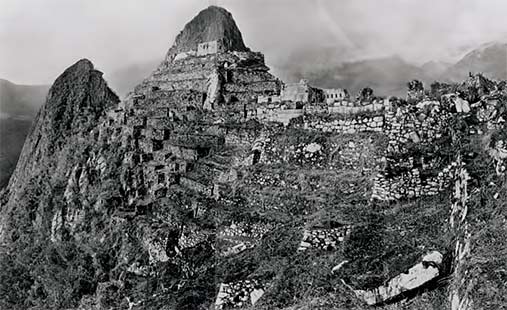
Intihuatana Hill and the terraces west of the Sacred Plaza
Photo – Hiram Bingham
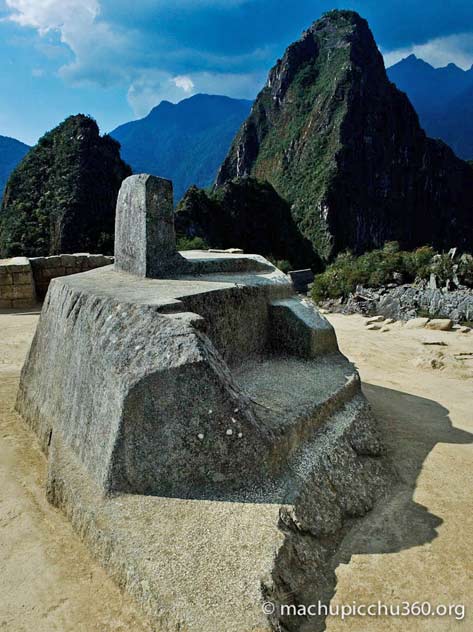
‘Intihuatana’
machupicchu369.org

